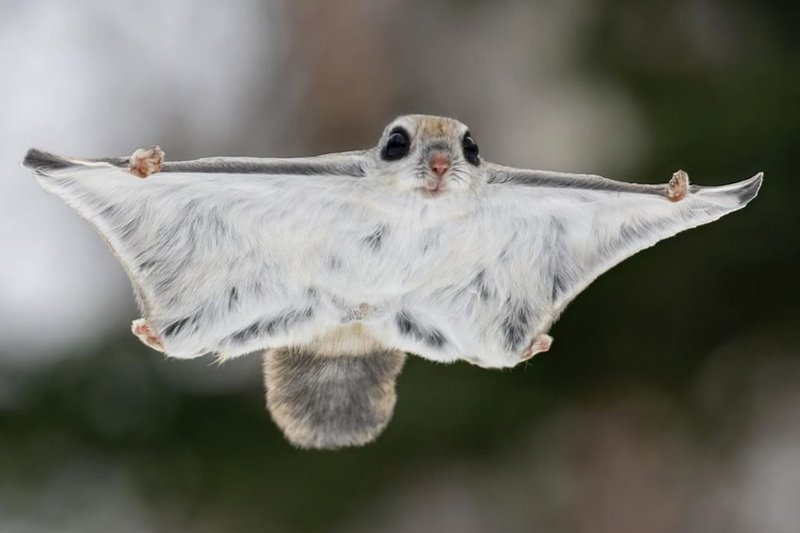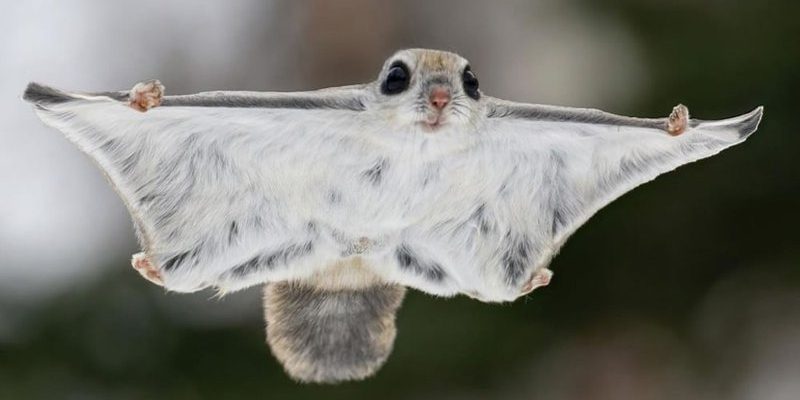
Flying squirrels are not actually flying, but rather, they glide thanks to their special adaptations. These little creatures have flaps of skin between their limbs, which act like wings and allow them to leap from high places and glide gracefully down. Encountering them in the wild can be a memorable experience, and knowing how to respond is essential for both your safety and the squirrel’s well-being. Here’s a guide to help you navigate your encounter with these charming gliders.
Understanding Flying Squirrels
Before diving into what you should do if you come across a flying squirrel, it’s helpful to understand a bit about them. There are two primary species found in the United States: the Northern Flying Squirrel and the Southern Flying Squirrel. Both are nocturnal, meaning they’re most active during the night.
You might be wondering why they glide. Flying squirrels use this ability to escape predators and move between trees in search of food. They primarily feed on fruits, nuts, and even fungi, which is essential for their diet. Their social behavior is pretty fascinating too! These squirrels often live in groups, creating nests together in tree hollows. So, if you see one, there could be more nearby!
What to Do If You Spot One
So, you’ve spotted a flying squirrel. First off, stay calm. It’s easy to feel excited or startled, but these creatures are more afraid of you than you are of them. Take a moment to observe from a distance. They’re naturally curious and usually won’t fly away immediately. Instead, they might just sit there, checking you out.
While observing, avoid sudden movements or loud noises. This helps keep the situation relaxed. If the squirrel feels threatened, it could bolt or glide away quickly. Instead, let it take its time. You might get a front-row view of its unique gliding abilities!
Respecting Their Space
Flying squirrels are wild animals and deserve respect. If you notice the squirrel is in distress, it’s crucial to give it space. Maybe it’s trying to rest in a tree, or perhaps it’s hiding from a potential predator. Disturbing it could cause unnecessary stress or harm.
To help maintain their natural behavior, never try to get too close or touch one. Wildlife encounters are best enjoyed from a safe distance. Think of it like visiting an art gallery—you wouldn’t rush up to a painting; you’d admire it from a respectful distance.
When to Seek Help
In some cases, you might come across a flying squirrel that appears injured or distressed. If it seems unable to move or is stuck, it’s essential to seek help from a local wildlife rescue or rehabilitation center. They’re trained to handle these situations safely and effectively.
To get assistance, you can:
- Contact a nearby wildlife rescue hotline.
- Provide them with details about the situation and location.
- Follow their instructions carefully to ensure the safety of both you and the squirrel.
Remember, attempting to capture or care for the animal yourself could lead to further injury for both you and the squirrel.
How to Protect Flying Squirrels
If you’re a nature enthusiast, equally as important as knowing what to do when you encounter flying squirrels is understanding how to protect them. Habitat loss is one of the biggest threats to their populations. You can help by advocating for forest preservation and supporting local conservation efforts.
Additionally, if you have trees in your yard, consider leaving some of them standing, as they offer natural habitats for flying squirrels and other wildlife. Planting trees or shrubs that produce seeds and nuts can provide food sources as well.
Educating Others
Sharing knowledge is one of the best ways to protect flying squirrels. If you’re fascinated by these incredible creatures, talk about them with family and friends. You might even spark an interest in wildlife conservation among others. Organizing or participating in local events focused on wildlife awareness can help spread important information.
Consider creating a blog or posts on social media about your experiences with flying squirrels to share your passion. The more people know about them, the better chance they have for preservation.
Encountering a flying squirrel in the wild can be a magical moment. Just remember to stay calm, respect their space, and enjoy the encounter from a distance. These wonderful creatures contribute to the biodiversity of our ecosystems, and it’s our responsibility to protect them. Whether by advocating for their habitats, seeking help when needed, or sharing knowledge, every action counts. So, the next time you’re out in nature, keep your eyes on the treetops—you might just witness the enchanting glide of a flying squirrel!

